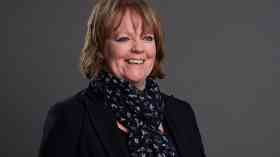
Considering everyone’s safety on-site
Ensuring that everyone who uses a school site does not come to harm is a wide-ranging and challenging job. Fiona Riley, chair of IOSH’s Education Group, and health, safety and facilities manager at a large independent day school, explains how it can be done.
The safety, health and well‑being of everyone who uses my school’s premises is my priority.
Every weekday, we have up to 2,300 pupils – aged from six weeks to 18-years‑old – and in excess of 500 staff on site; but there are many more people whose safety needs to be considered.
In addition to our regular occupants, we also have the many contractors and service providers who are on site both during the normal school day and also outside of school hours. We also have those who use the facilities, such as our leisure and conferencing facilities in the evenings after school, at weekends and during school holidays.
Making sure that all of these people leave the school buildings and grounds without being harmed is, without doubt, challenging. There are many things to consider. So, how do we manage it successfully?
Access control
A basic requirement of all schools is the need to ensure that everyone on the premises at any given moment is legitimately there. With this in mind, access control is now becoming increasingly common in most schools across the UK. This is often used in conjunction with perimeter gating systems and CCTV cameras. As part of this, at our school, all pupils and staff are given access control cards. These include a photograph of themselves along with a lanyard. They have to use these cards if they want to access the school site and building.
Having these access control cards also has its other uses as well, such as controlling our lunch system and the borrowing of library books, but it is very much a way of ensuring the security and safety of everyone on site. With this also comes the ability to track card holders across campus and, if required, deny access rights immediately.
Of course many other people use the school premises besides pupils and staff, so we have a thorough signing-in and signing-out protocol in operation to constantly monitor who is on the site. The use of parking permits for both staff and parents enables us to control movement around campus and ensures that we do not have anyone on the premises who should not be there.
Maintaining our Grade II-listed building also brings with it many challenges. We have an in-house team of maintenance, security, housekeeping and grounds keepers and they are crucial in the day-to-day running of the school.
Safeguarding others on site
We can have as many as 30 contractors on site on any given day during term time. This tends to significantly increase during non‑term time. Therefore having a protocol to manage contractors and service providers is vital to ensure safety and security. These contractors include those doing routine maintenance tasks like servicing photocopiers as well as window cleaners, florists, electrical contractors and so on.
We have to plan when contractors are on site, considering when the most appropriate time is. Some of them will be at the school very early in the morning, before students are even out of bed let alone on the way to school.
Refuse collection is a tricky area in this regard. We do not want these vehicles around the school, doing various manoeuvres, at the same time as there are huge amounts of pupils, parents and staff walking nearby. This would pose many serious safety risks. The process of emptying the bins can take between one and two hours, so we start this task early in the day, prior to when most people start to arrive and the premises gets busy.
This is just one example of activity on our site outside of normal school hours. In effect, and contrary to common belief, the school day is significantly longer than just when the pupils are in lessons. In the evenings after school we could have parents’ evening, a school show, or a guest lecture. At weekends, we have people using our sports facilities. During school holidays, we have activity clubs for young people.
This all needs to be considered. We need to ensure everyone’s health and safety, whether it is during school hours or not.
At this time of year we also have the added complication of the weather, which can impact on the school day. Again, this is something we must consider as safety and health professionals.
It does take planning, including keeping an eye on the weather forecast. If we have snow, our grounds staff will be out from very early to make sure access areas are clear and safe to use for anyone who needs to get into the school.
Our parents, quite rightly, expect that we will be open all of the time. So when we have bad weather, we do everything we can to keep the school open and make sure the site is safe, for example reducing the risk of people hurting themselves on ice.
Health, not just safety
In many industries, not just education, a lot of prominence is given to safety. It is great that organisations do view the safety of staff as a priority.
However, we must not concentrate solely on safety and neglect the health of employees. Millions of employees in the UK and other parts of the world face many risks to their health in their workplace.
IOSH is running a campaign, called No Time to Lose, to raise awareness of cancer-causing agents which can be found in workplaces, such as asbestos, diesel engine exhaust emissions and silica dust. Without the right controls, exposure to these agents can lead to cancer, potentially many years down the line.
People should be able to go to work in the knowledge that they will not come across anything which could harm their health.
There are other health-related matters in school which we must also consider and ensure proper controls are in place for. For example, we have radioactive sources in the science labs. If the proper procedures are not followed, it is possible that there could be serious repercussions. So we pay a lot of attention to this.
There are other legal compliance issues that we need to look at as well. We have to consider risks posed by legionella, kilns, movable walls and play equipment.
As any occupational safety and health professional would tell you, having a good safety record at my workplace is only part of my job; we need to ensure that everyone’s health is also looked after.
Obtaining buy-in
The Institution of Occupational Safety and Health (IOSH) firmly believes that all workers in all industries should be covered by a culture of care. Safety and health professionals, including IOSH members across the world, have a major role to play in making this a reality.
As IOSH members, safety and health is our job. We design safety and health management systems which are aimed at protecting those we work with to prevent them from being harmed.
But, as with organisations in other industries, having these management systems is only one step towards protecting everyone. To be effective, you need to obtain buy-in from all. In the case of a school that goes from the senior leaders to the students. They are all responsible for following the correct procedures.
To be able to ensure this happens, having a culture whereby everyone takes their responsibility seriously is important. I am fortunate in my role that I get a lot of support from people within the school. I have a good working relationship with teaching staff whereby if they have an issue they will report it to me immediately, in the knowledge that it will be taken seriously and acted on.
To keep this going, whenever we have new teaching staff join us, part of their induction is to have a talk with me, so I can take them through the systems we have. For example, I will speak to them about first aid and fire evacuation procedures.
If you take the second aspect, it is important we get this right; if you have nearly 3,000 people on site it can take up to 30 minutes to evacuate. Having regular drills is important in making sure procedures are effective, so any issues can be addressed.
So, ensuring the safety and health of everyone who uses the school site requires a huge amount of thought and planning, whether it is practicing fire evacuations or keeping an eye on the weather, and needs the building of a culture where everyone takes responsibility.
Everyone who comes onto the site, whether it is a child in our nursery, a pupil, a teacher or a contractor, has the right to expect they leave it without their safety or health being at risk.
This all forms part of successfully-run school.
Further information
www.iosh.co.uk
Latest News
08/01/2026 - 10:30
The government is launching a new app allowing students to view their GCSE results on their phones for the first time from this summer.
08/01/2026 - 09:45
Education Business LIVE has announced that Professor Samantha Twiselton OBE of Sheffield Hallam University will speak at the event in March 2026, delivering two thought-provoking sessions focused on initial teacher training and SEND provision.
07/01/2026 - 10:10
Solve for Tomorrow is a free, curriculum-linked programme which is mapped to Gatsby Benchmarks 4, 5, and 6, helping teachers embed careers education without adding to workload.
06/01/2026 - 10:24
London's universal free school meals programme has not led to improvements in pupil attainment during its first year, but has eased financial pressure and reduced stress for families.
05/01/2026 - 10:44
New regulations have come into force from today, banning adverts for unhealthy food and drinks before 9pm, and online at all times.







